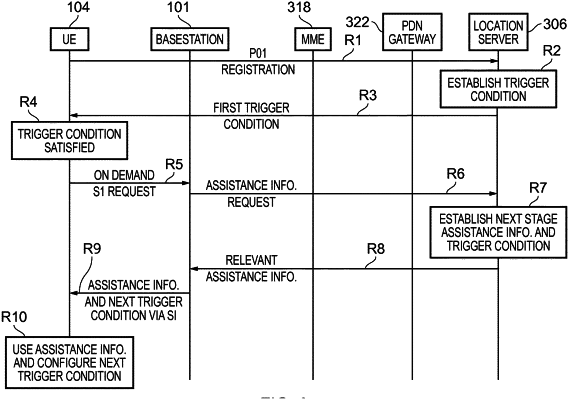| CPC H04W 4/024 (2018.02) [G01S 5/0236 (2013.01); G01S 19/48 (2013.01); H04W 64/006 (2013.01)] | 17 Claims |

|
1. A method of operating a terminal device to provide a navigation function in a wireless telecommunications system comprising the terminal device and a location server, wherein the terminal device supports a plurality of positioning techniques which use positioning measurements made by the terminal device and positioning assistance information received from the location server to determine location information for the terminal device, wherein the method comprises:
establishing a target location;
selecting a first positioning technique to use for navigating towards the target location;
receiving first positioning assistance information from the location server for the first positioning technique;
determining first location information for the terminal device from positioning measurements made by the terminal device in accordance with the first positioning technique and the first positioning assistance information,
establishing a first trigger condition for using a second positioning technique with a higher positioning accuracy than the first positioning technique, wherein the first trigger condition is dependent on the target location and is associated with an identifier for a radio network access node in the wireless telecommunications system in the vicinity of the target location, and the first trigger condition is deemed to be satisfied when the terminal device determines from radio signalling received from the radio network access node associated with the identifier that the terminal device is within a radio coverage area served by the radio network access node; and,
in response to determining the first trigger condition is satisfied, determining second location information for the terminal device from measurements made by the terminal device in accordance with the second positioning technique and second positioning assistance information received from the location server for the second positioning technique.
|